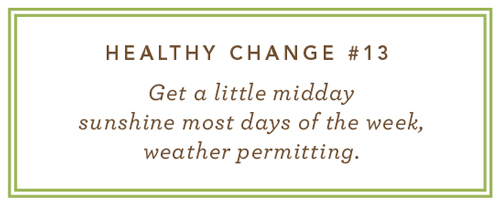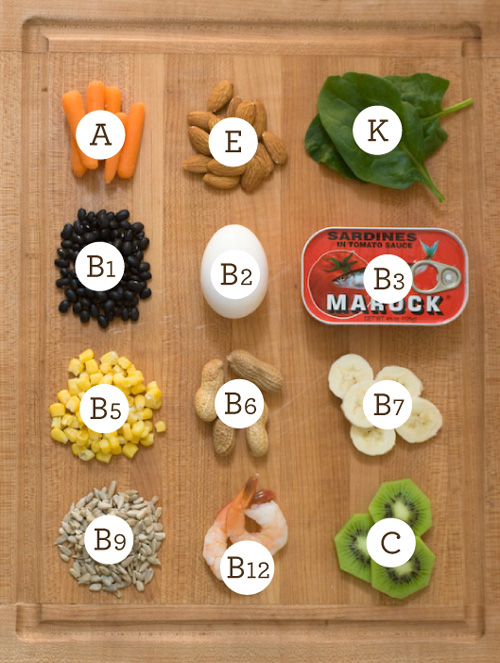More Vitamin D
Vitamin D Survey
We’re asking all readers to answer two questions in the comment section below:
1) Have you ever been tested for vitamin D, yes or no.
2) If so, can you share the test result (in ng/mL, the usual form).
Thank you very much; we’ll share the result in the next post.
Health and Quilting
The beautiful wife wishes my Word of Wisdom Living posts were shorter, perhaps 600 words. I try, but the last post on vitamin D, a critical health topic, ran 1220 words. And I didn’t even cover all the important points, like how to optimize vitamin D from sunshine. So here are a few more words about the vitamin that’s more like a hormone, and is sometimes called the immunity steroid. For more on the benefits of vitamin D, see this article by Dr. Jack Kruse, a neurosurgeon.
Before we get too passionate about vitamin D, please remember one thing: WOWL seeks a balanced view of nutrition and health; we try to stay above the fads that come and go. It helps to think of your health as a quilt comprising 52 patches, which we address with our weekly Healthy Changes. Most people act on perhaps a half-dozen or so health topic, dominated by those most recently in the news. A PhD nutritionist might be aware of a thousand, or so, an impossibility for the average person. We attempt to increase your vision and practice to cover 52—a boost that just might save the life of someone you care for.
The Seasonal Cycle
Vitamin D and omega-3 fats work together in the body. (We'll talk about omega-3 fats in two weeks.) Both are essential to brain function, for example. So it shouldn’t surprise they have harmony in Nature. The green plants of spring and early summer deliver the most omega-3 fats, just as the sun restores our vitamin D by shining brighter and longer.
The pattern of spring is reversed in the fall. The fall harvest—more brown than green—is low in omega-3 and high in omega-6, which seems to prepare us for winter. Vitamin D levels decline also—as the sun drops low in the sky and the days grow shorter, we produce less D. There's likely a good reason for these seasonal variations but until more is known, it seems wise to keep vitamin D within the optimum range.
Best Sources of Vitamin D
Studies suggest Americans have too little vitamin D and this is getting worse. Two big reasons are 1) we've been taught (by weathermen, the clowns of TV) that sunshine is bad, and 2) the modern American diet (MAD) may be making things worse. For example, the MAD is low in omega-3 fats and excessive in omega-6. There's evidence this combination inhibits the body's ability to produce vitamin D, even if you get enough sunshine. If you get plenty of sun but have low serum vitamin D, take a look at your diet.
There are other reasons for low vitamin D production: If you're older things just slow down (but you do have more time to sit in the sun). If you're overweight or obese your vitamin D supply can be trapped in permanent fat tissue and unavailable. (Fat cells are the winter storage depot for vitamin D.) A darker complexion is rich in melatonin, which protects the body from the sun, but slows down vitamin D production. And there are always the genetic differences.
What is the best way to increase your vitamin D? Dr. John A. McDougall, an advocate of disease prevention through diet and lifestyle, gives his opinion in this article. Basically, he favors 1) regular sensible sun, if possible, 2) the safe use of tanning booths in winter, and 3), as the last resort, vitamin D pills. There are also dietary sources of vitamin D that shouldn't be overlooked.
Dietary Vitamin D
As you move away from the equator, people get less vitamin D producing sunshine. But the consumption of meat increases and animal (as well as human) fat is a storehouse for vitamin D. So you get some D from animal fat (as well as the organ meats). Then there’s your internal supply: If the fat you add in the fall actually disappears in the winter, you’re releasing some vitamin D.
Cold-water fish are another source of vitamin D, in addition to omega-3 fats. Wild salmon have a lot of D, 600-1000 IU per serving; farmed salmon contain about 1/4th as much. Herring, sardines, tuna and shrimp also contain vitamin D, as well as omega-3 fats. If you’re eating fancy, oysters and caviar are a good D source. Remember the tradition about eating fish in the months with an ‘r’? Isn’t it nice that these are the months with the least sunshine?
The sun-starved folks in New England traditionally ate a lot of cod. Cod liver oil is uniquely rich in both omega-3 and vitamin D. (Cod liver oil has 1300 IU of D in just 1 tbsp.) Nature does provide.
Eggs contain vitamin D also, about 20-37 IU. Some breakfast cereals have been fortified with vitamin D (40-140 IU per serving): milk contains 100 IU of D, added by irradiation. Though these are synthetic forms of D, you can get 300 IU or so with a hearty breakfast. Mushrooms contain D and this is increased if you place them in the sun for a few hours.

This Week’s Recipe
In the 52 Breakthrough Recipes we plan to post this year, we’ve included five salads. THe Healthy Change implied a recipe with vitamin D so the beautiful wife suggested a Classic Seafood Salad recipe, which we included in this week’s menu. Here’s our recipe:
Classic Seafood Salad
Ingredients (feeds 4):
- 8-12 oz. of cooked shrimp
- 4 cups dark greens, washed
- 4 green onions, chopped
- 4 eggs, hard-boiled and quartered
- 2 medium tomatoes, cut into sections
- 1 avocado, sliced
Directions:
1) This is too easy but always a treat; it can be the only dish if accompanied with bread. We ate it this week with cheese quesadilla. Simply arrange the ingredients on a salad plate, artfully. You can add about any produce you have on hand. This salad works with almost any seafood; canned tuna is easy on the budget, but we also buy crab when the price is right.
2) Serve the dressing at the table. The beautiful wife makes a 1000 Island dressing by combining our homemade chili sauce with ketchup and mayonnaise.
Please Comment: Per the request at the top of the page, please tell if you’ve been tested for vitamin D (yes or no), and share the test result, if you don’t mind.
 Friday, March 30, 2012 at 8:47PM | by
Friday, March 30, 2012 at 8:47PM | by  Skip Hellewell |
Skip Hellewell |  40 Comments | | in
40 Comments | | in  recipe,
recipe,  salad,
salad,  vitamin d |
vitamin d |  Email Article
Email Article 







